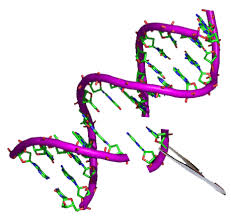General Science Notes On – Chromosome Theory Of Inheritance – For W.B.C.S. Examination.
সাধারণ বিজ্ঞান নোট – ক্রোমোজোম উত্তরাধিকারের তত্ত্ব – WBCS পরীক্ষা।
In 1902 and 1903, Sutton and Boveri published independent papers proposing what we now call the chromosome theory of inheritance. This theory states that individual genes are found at specific locations on particular chromosomes, and that the behavior of chromosomes during meiosis can explain why genes are inherited according to Mendel’s laws.Continue Reading General Science Notes On – Chromosome Theory Of Inheritance – For W.B.C.S. Examination.
-
Chromosomes, like Mendel’s genes, come in matched (homologous) pairs in an organism. For both genes and chromosomes, one member of the pair comes from the mother and one from the father.
-
The members of a homologous pair separate in meiosis, so each sperm or egg receives just one member. This process mirrors segregation of alleles into gametes in Mendel’s law of segregation.
-
The members of different chromosome pairs are sorted into gametes independently of one another in meiosis, just like the alleles of different genes in Mendel’s law of independent assortment.
In 1866, Gregor Mendel published the results of his pea plant breeding experiments, providing evidence for predictable patterns in the inheritance of physical characteristics. The significance of his findings was not immediately recognized. In fact, the existence of genes was unknown at the time. Mendel referred to hereditary units as “factors.”
The mechanisms underlying Mendel’s observations—the basis of his laws of segregation and independent assortment—remained elusive. In the late 1800s, advances in microscopy and staining techniques allowed scientists to visualize mitosis and meiosis for the first time.
In the early 1900s, Theodor Boveri, Walter Sutton, and others independently proposed that chromosomes may underlie Mendel’s laws—the chromosomal theory of inheritance. Researching sea urchins and grasshoppers, respectively, Boveri and Sutton noted striking similarities between chromosomes during meiosis and Mendel’s factors.
Like Mendel’s factors, chromosomes come in pairs. Reminiscent of Mendel’s law of segregation, these pairs become separated during meiosis such that every gamete (e.g., sperm or egg) receives one chromosome from each pair. Chromosome pairs are segregated independently of one another, corresponding to Mendel’s law of independent assortment.
The first concrete evidence for the chromosomal theory of inheritance came from one of its critics, Thomas Hunt Morgan. Morgan found that a mutation affecting the eye color of fruit flies was inherited differently by male and female flies, and demonstrated that this trait was determined by the X chromosome.
We now know that Mendel’s factors are DNA segments—called genes—at specific chromosomal locations. The independent assortment of genes on different chromosomes is a consequence of the random arrangement of chromosomes at the midline of a cell during metaphase I, which determines which genes segregate into the same daughter cells. Each homologous pair of chromosomes migrates independently of the others. The law of segregation corresponds to the movement of chromosomes during anaphase I which ensures, under normal conditions, that each gamete receives only one copy of each chromosome randomly distributed.
Please subscribe here to get all future updates on this post/page/category/website


 +919674493673
+919674493673  mailus@wbcsmadeeasy.in
mailus@wbcsmadeeasy.in







































































































